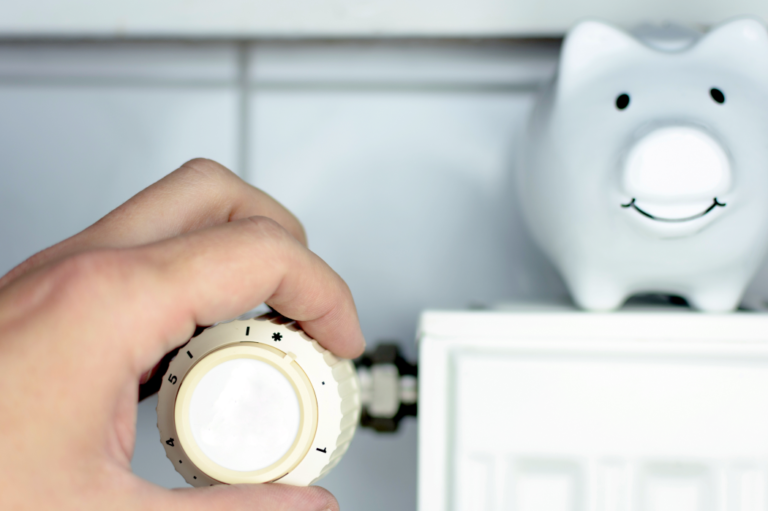Energy efficient windows are worth it because they lower your electricity and gas bills, improve your home’s comfort and property value and offset its carbon footprint.
Windows are one of the biggest sources of energy loss in your home, and if you’re looking to save on your utility bills, there are several things you can do to make them more energy efficient.
First, replacing your windows isn’t the only way to make them more energy efficient, you can do plenty of things to improve their performance without spending a fortune on replacements.
Here are a few of our best tips on how to make your windows more energy efficient, along with a few reasons you should consider upgrading them:
1. Energy Efficient Windows – Insulate the Glass
Insulated glass is an excellent way to make your windows more energy efficient. This simple upgrade can make a huge difference to your comfort level and could help save you a significant amount on your monthly energy bills.
As you likely already know, windows are a huge source of heat loss in your home. This heat escapes through the window frames, seams, and glass over and over again during cold weather, making your HVAC systems work harder to keep your house comfortable.
In order to combat this, insulated glass is made up of two or more panes of glass sealed together with an air space between them. The airspace can be filled with argon or krypton gas, both of which are dense and conduct heat less readily than air.
The argon and krypton in the airspace also act as a thermal break, preventing hot or cold exterior air from transferring through the window. This insulation boosts the window’s overall u-value (which is a measurement of the resistance to heat transfer), which helps increase its energy efficiency.
Additionally, insulated glass can also reduce outside noise, as the airspace between the panes absorbs sound waves. This is a great feature for homes with noise problems.
You can choose from a variety of insulated glass options when shopping for new windows. It is important to make sure that the glass you select meets your local energy codes.
2. Energy Efficient Windows – Insulate the Frame
If you have any cracks or gaps between the frame and glass, it can cause air leakage and heat loss. To prevent this, you can install insulation around the windows.
Window frames are often constructed from wood or a cellulose material, which is a natural insulator. However, wood can deteriorate over time due to weathering and insect damage. You can replace the wood with a synthetic material that is less susceptible to rot and decay.
You can also add polyurethane insulation foam to the edges of the frames to increase their insulating power. This is a very cost-effective way to insulate your windows and will provide significant energy savings.
This foam can be applied to the exterior sides of your windows using a foam gun. It is a low-expanding product that creates a tight seal when installed correctly.

Another option for insulating window frames is fibreglass insulation. It is available in a variety of thicknesses and can be installed in any size space to fill in gaps.
Whether you choose fibreglass or other materials, make sure to cut the material so that it fits snugly into the frame without allowing air pockets to form. This will ensure that the fibreglass stretches across the frame and provides the best insulating effect possible.
Bubble wrap can also be used to insulate your windows and is a cheap option that is very effective. It can be bought at many home improvement stores and is available in a wide range of sizes and shapes.
Before installing these products, you should clean the window and frame thoroughly so that the foam will adhere properly. You may need to use double-sided tape to help it stay in place.
3. Energy Efficient Windows – Install Window Film
Window film is a great solution for many types of windows. It can reduce solar heat, improve your energy efficiency, and protect against damage to windows.
It’s also a great way to improve your privacy at night without sacrificing natural light. You can even choose to add a layer of tint that helps block UV rays and reduce glare.
Adding window film to your windows is easy, affordable, and can dramatically impact your home or business’s energy usage. But before you start the process, there are a few things you should know.
First, be sure to clean your window thoroughly with a window cleaner solution. You don’t want to use the typical household glass cleaners as these can leave spots on your windows and may scratch the film.
Next, scrape your windows with a razor blade to remove any stuck-on debris. This will help prevent scratches and make the film stick better to your glass.
You can use a lint-free cloth to wipe your windows down after you’ve finished cleaning them. Once your windows are dry, you can apply the window film.
A professional will know how to correctly cut the film for your windows and eliminate air bubbles that can affect the effectiveness of the film. This will help your windows become more energy efficient and reduce maintenance costs.
Once the film is installed, you can enjoy a comfortable, beautiful, and energy-efficient environment in your home or business! In addition, you’ll also be protecting your windows from shattering and reducing your risk of vandalism and theft. In addition, window film will help your home or business stay cool and comfortable during the summer.
4. Energy Efficient Windows – Install Shades, blinds, shutters and drapery
You can save a lot of money on your energy bill by replacing your windows with window treatments that are designed to keep your home insulated. These window coverings include cellular shades, blinds, and Roman shades.
Window treatments can make your windows more energy efficient by regulating the amount of light and temperature. They can also provide privacy and add aesthetic embellishment to your home.
Window blinds, shades, shutters and drapery come in many different styles to help you customize the look of your windows. You can choose window treatments that let in plenty of natural light or darken your room by choosing blackout or room-darkening options.
How to make your windows more energy efficient: Video
Using window treatments to keep your home warmer in the winter and cooler in the summer can help reduce your energy bills, which is good for your pocket AND the environment.
5. Energy Efficient Windows – Replace Old Windows
You may also decide to replace your windows altogether! Replacing your old windows with new, energy-efficient ones is one of the best ways to make your home more comfortable. It also helps keep your heating and cooling costs down, which is especially important in colder climates.
The best windows are BFRC certified, which will reduce your energy bill.
If your window frames and sashes are made from old-growth wood, it’s time to replace them. These windows are generally more brittle than the modern versions and can easily break apart.
You can replace a sash or frame with a kit that includes a new liner, which is fastened to the jambs on each side of the opening. A sash is then slipped in between.
Another option is to replace individual panes of glass. This can be a fairly simple job, but you’ll need to have a trained professional handle it.
Depending on how old your windows are, you may want to look for replacements that use thicker glass panels. This will help prevent heat loss and glare.
Additionally, many window companies offer low-e coatings that reduce the amount of ultraviolet (UV) rays in your home. This can protect your furniture, floors and walls from fading.
You can also install a tight storm window in front of your existing windows to add more insulation and reduce heat loss during winter. These new windows are often more expensive than a sash or frame replacement, but they can save you money in the long run. If replacing all of your old glass is not an option, consider insulating your windows with applied window film.
Re-caulking around windows is a great way to increase insulation and decrease air leaks, even in older homes. Re-caulking is an easy DIY project that can take less than an afternoon and cost a fraction of what you would spend on new window frames, sashes or gaskets.













